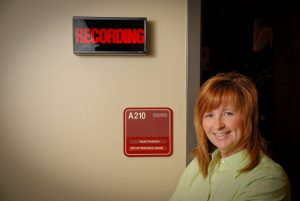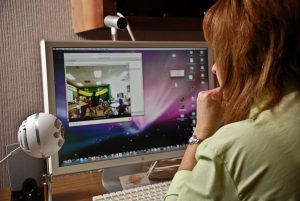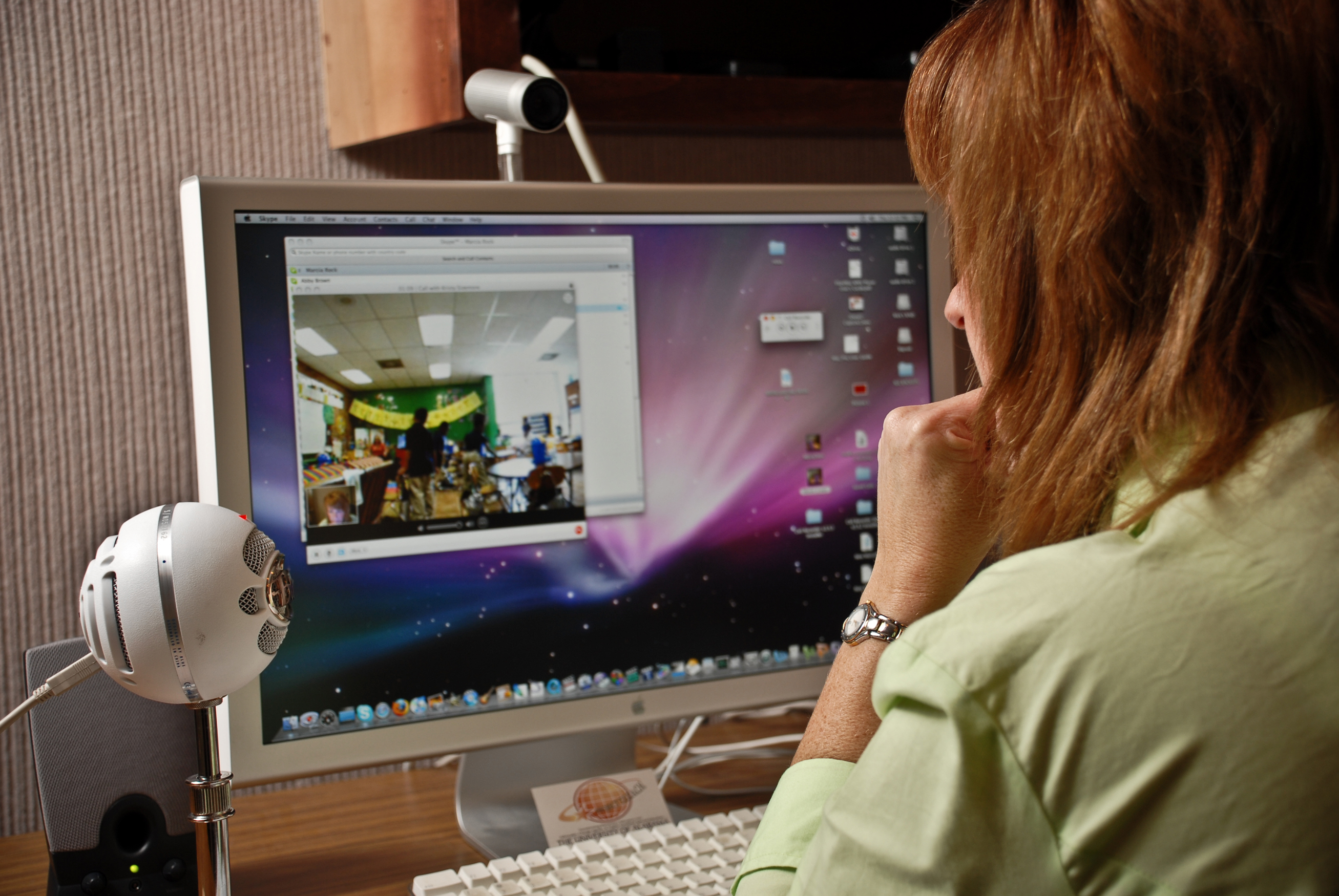In-ear Technology Provides Teachers Immediate Mentor Feedback
by Suzanne Dowling When students make mistakes in the classroom, teachers are instructed to use immediate feedback. This makes a strong impression and ensures that students won’t repeat the mistakes again and again.

As sensible as this sounds, the same teachers, when they were student teachers, typically had to wait hours, or even days, to get feedback on their own teaching techniques. That is no longer the case, thanks to a University of Alabama education professor’s development of the Virtual Bug in Ear, known as VBIE. The first of its kind, VBIE combines mobile and Integrated Visual Computing, or IVC, technologies to deliver instruction and feedback to practicing teachers in real time. “It’s clear to us that today’s teachers need more feedback since recent statistics show that only one in seven teachers currently meets the standard of effectiveness necessary to produce large learning gains in students,” says Dr. Marcia Rock, associate professor of special education and multiple abilities at UA. “By using the VBIE technology in this way, we are breaking the barriers and bringing communities of knowledge and practice together for the first time in cyberspace. From our University of Alabama offices, we can now be in any classroom, anywhere, at anytime,” she says. According to Rock, the traditional BIE device, in use since the 1950s, was remarkably trouble-free for both the trainee and the supervisor in obtaining immediate feedback. Using two-way radios with microphones and audio receivers, previous BIE researchers have documented numerous benefits, concluding unanimously that the BIE was far superior to traditional forms of coaching or supervision, says Rock. One drawback; however, was its limited transmitting range – only 150-300 feet. This required the supervisor to be on school property, in spite of the technology. In 2006, Rock, along with her then graduate student, Beth Thead, developed collaboratively the VBIE while

developing a grant proposal for the United States Department of Education Office of Special Education Programs. “Dr. Rock asked me to research a better method using the most up-to-date technology, specifically suggesting that I look for ways to incorporate mobile technology (i.e., Bluetooth),” says Thead. “So, I came up with the idea of combining webcams and Bluetooth headsets through Internet research and by confirming the potential capabilities of the application with a technical support person over the phone.” Rock then completed the VBIE system by adding a Voice over Internet Protocol, or VoIP, and a call recording component. The grant proposal was funded, and Rock is now halfway through the four year $800,000 award, testing the efficacy of the VBIE technology with teachers in 26 partnering districts across west Alabama. Sixteen scholars launched the VBIE technology and 14 more will continue to use it over the next two years. The first cohort of Project TEEACH scholars, who began in January of 2007, has moved gradually from bi-weekly VBIE sessions to weekly ones. Rock calls these scholars “virtual pioneers.” “No other teachers in the country have done what they have. Having someone ‘in your ear’ while you are teaching is very daunting. So, my hat’s off to them for embracing this cutting edge technology and for being willing to participate in this important research,” says Rock. “In the teaching profession you aren’t given ‘great job’ very often,” says Terri Carden, one of the TEEACH scholars in the VBIE project. “Dr. Rock’s feedback in the VBIE is so motivating because she makes you want to jump out of your comfort zone and do different teaching strategies.” “Dr. Rock tells you what to do in your ear, you do it, and you see that it works,” says Kristy Sizemore, another TEEACH scholar. “It’s etched in your brain. You remember to use it each time from then on.” Rock and her research team conduct extensive analyses of VBIE data. Rock herself has conducted about 400 coaching sessions, and members of her team now code more than 300 hours of VBIE video files each semester. Each semester, both quantitative and qualitative data have remained constant, showing a high level of improvement, Rock says. “Analyses resulting from matched pair t tests and Dunn Bonferroni post hoc analyses have confirmed significant changes to teacher and student behavior,” says Rock. “Through the VBIE technology, we have demonstrated improved use of scientifically-based instructional practices,

increased changes in positive classroom climate, and increased levels of on-task student behavior with very limited disruption. It’s the best we could have hoped for,” she says. And, with such positive research results comes the potential for product marketability. Both Thead and Rock think the VBIE has immense potential as an actual product, not only in education, but in many other fields as well. “In the field of teacher education, the VBIE can facilitate more effective teacher preparation by providing instant feedback and by creating greater opportunities for mentoring and coaching,” said Rock Representatives within the University’s Office for Technology Transfer agree, and they have been working closely with Rock on patenting the VBIE. “We have conducted an extensive market opportunity analysis on VBIE and found three potential markets for the technology: e-educational training; e-corporate training; and virtual reality healthcare training, says Dr. William Gathings, OTT director.

“We have filed a provisional patent application and plan soon to convert this to a full utility patent application,” he says. In addition to OTT, Rock has worked with UA’s Faculty Resource Center to create a research lab aimed at promoting interdisciplinary VBIE investigations across the University campus. The pilot lab offers UA faculty from various colleges opportunities to conduct joint research and to craft collaborative grant applications, while providing technical support for virtual coaching and offering services such as video editing. Rock’s UA VBIE research team, which includes Drs. Madeleine Gregg, Randall Schumacker and Pam Howard and Donna Ploessl, Sharron Maughn and Meg Chapman, will spearhead these efforts. The collaborative efforts across campus and between UA and local and state agencies as well as with other higher education institutions have been vital, Rock says. “These partnerships are paramount to bridging traditional research to practice gaps. “My hope is that the VBIE technology partnerships we have established will not only bring needed reforms in teacher education, but also serve as a catalyst to transform professional coaching across disciplines by bringing communities of knowledge and practice together through cyberspace –whether they are across the street or across the globe.” Further Reading
